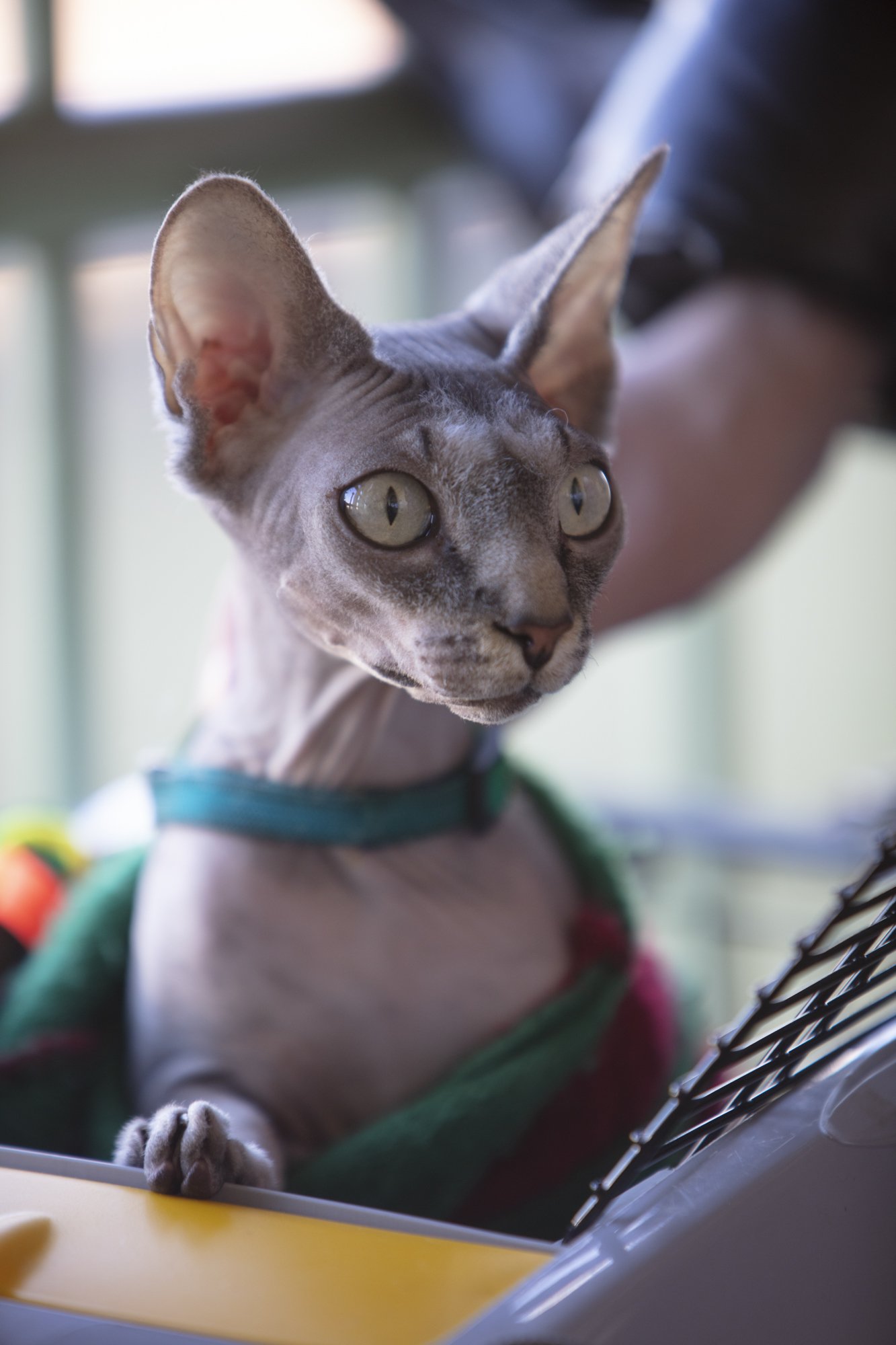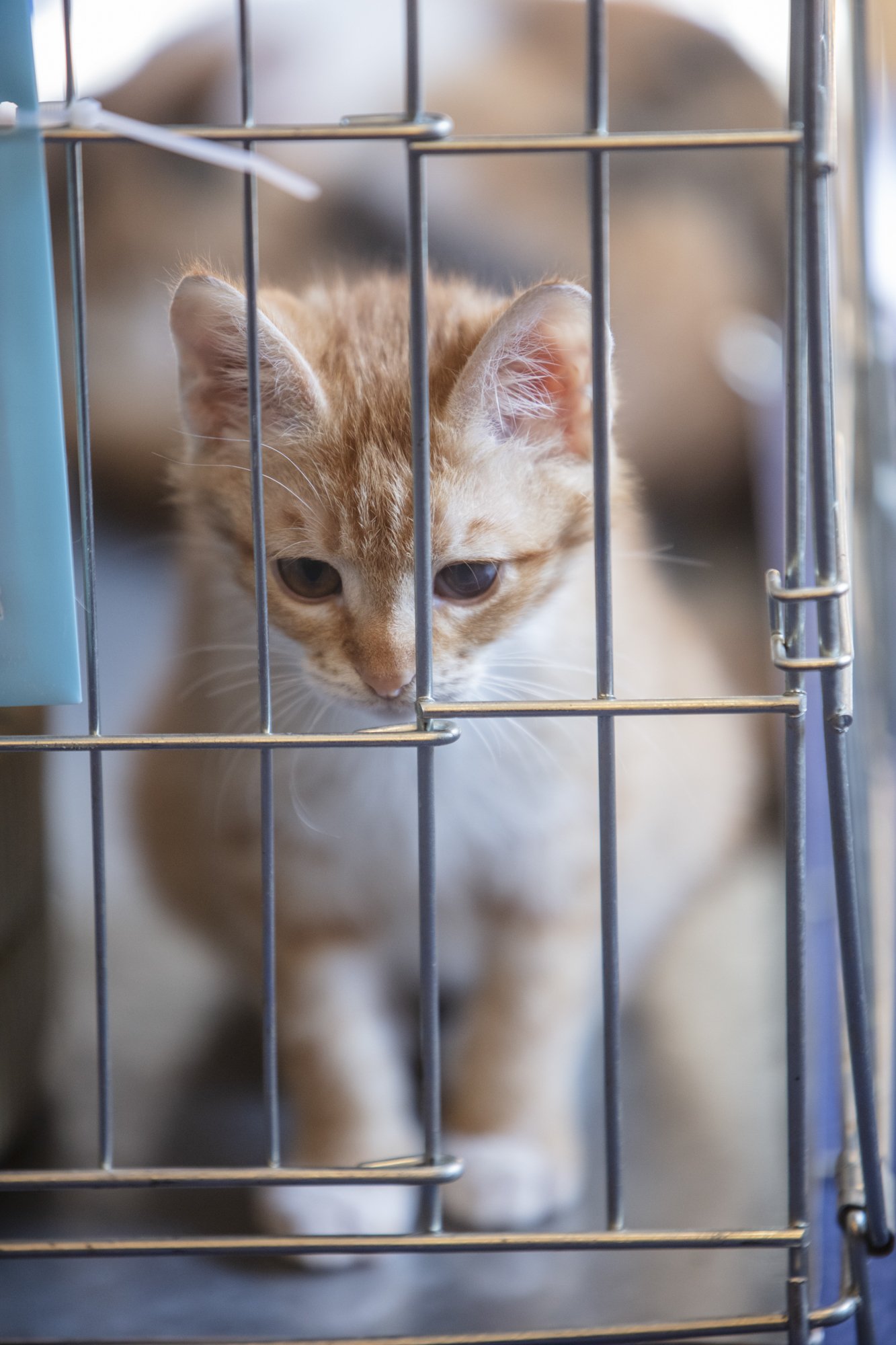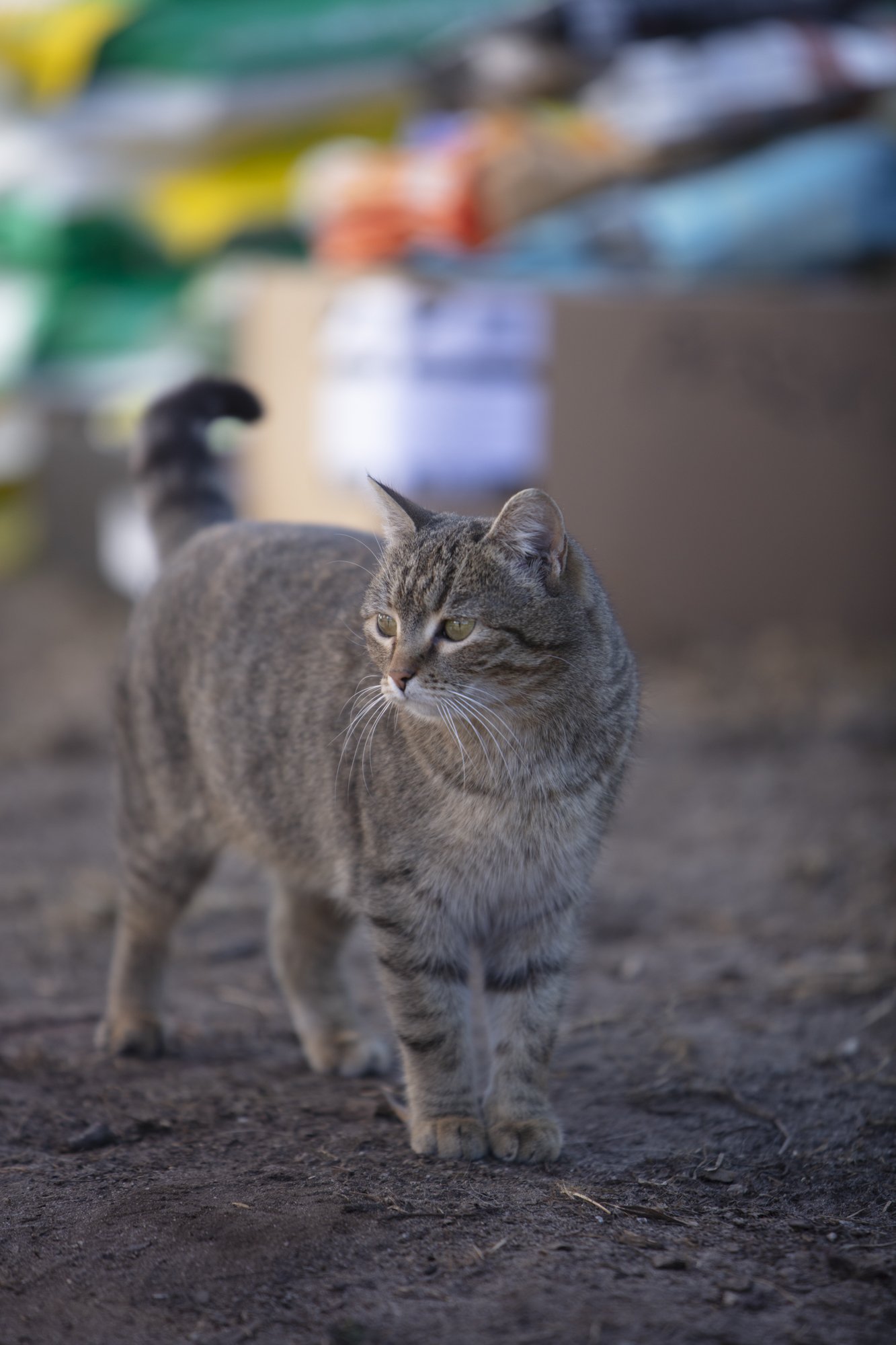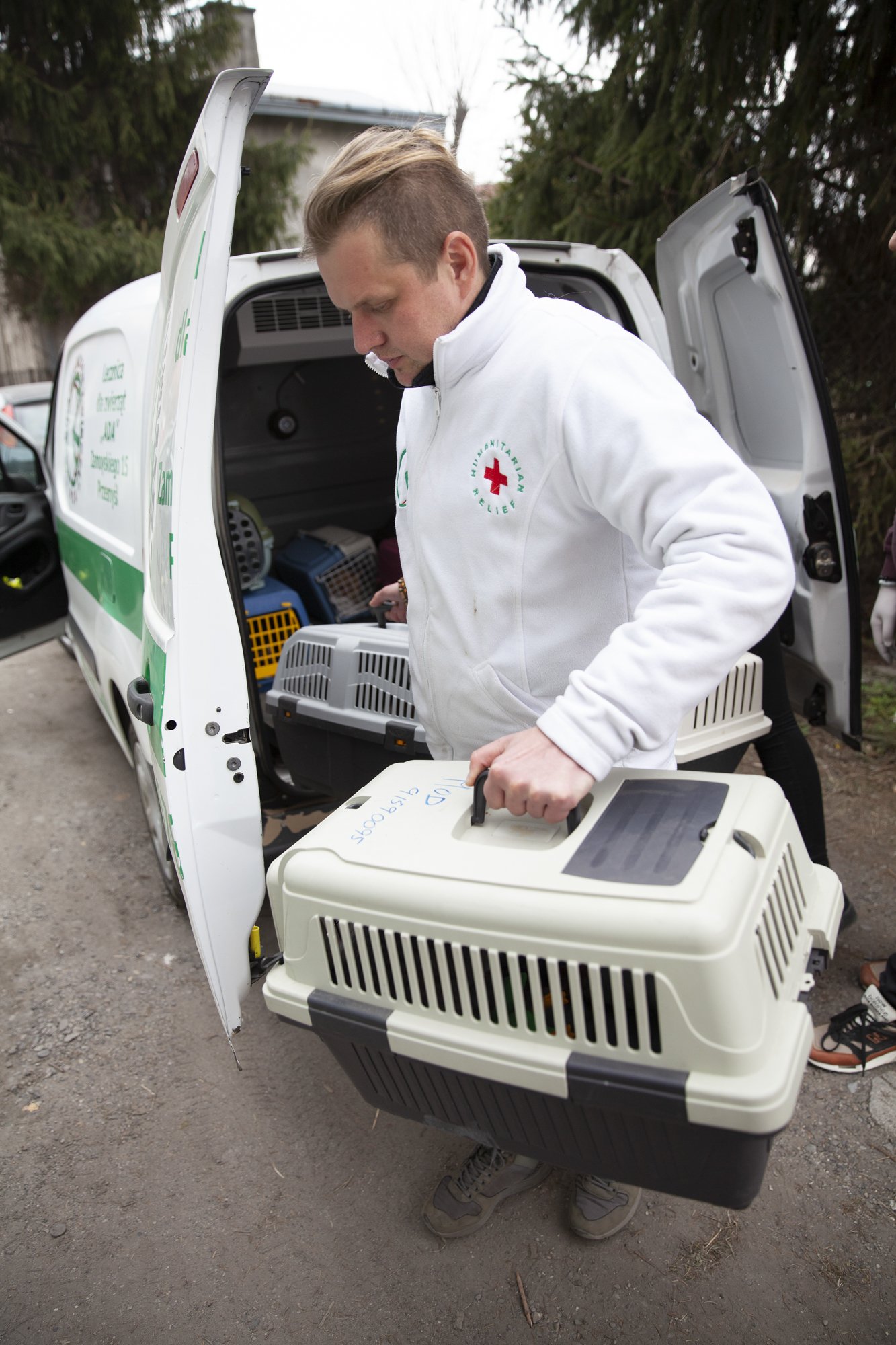Alan de Herrera
Freelance writer & photojournalist
Cats of War
Pets join Ukraine’s war exodus
CATSTER Magazine
Story and photos by Alan De Herrera
March 2022.
It’s been one month since the war began. I’m here in Ukraine, embedded with a Polish veterinary team from the ADA Foundation -- an animal clinic and hospital located near the Ukrainian border in Poland. We are traveling in a convoy of two animal ambulance vans, loaded with food and medical supplies. The team’s mission is to help pets displaced by war.
We pass another military check point as we drive towards the small village of Moskishka, located on the outskirts of Lviv. There is an eerie sense of foreboding as the war rages on, just 350 miles from here.
We arrive at Hope Ranch, a small shelter run by Anya Zhuk. As the team begins unloading several bags of donated kibble, I feel the friendly rub a cat’s fur against my leg. “She’s one of the cats from the east,” says Anya, referring to the animals that come from the war zone. Volunteers from all over Ukraine are risking their lives to bring homeless and orphaned cats west, to the relative safety of shelters like Anya’s.
Next, the team unpacks plastic cat carriers while five rescued cats are wrangled and readied for evacuation to Poland. “In order for us to bring them over the border, Polish authorities require each cat to be micro-chipped and have vaccination paperwork,” says Cezar Kotowicz, my driver and trip coordinator. One by one, each cat is carefully nestled into a soft bed and blanket for the long ride to safety, and a new life.
Nearby we also visit the Asylum of Mercy shelter where Natalya Kuznetsova tells us she has received hundreds of cats since the war started. The phone rings nonstop. “A private shelter with 50 cats contacted me yesterday urgently needing our help,” she adds. “But with all the fighting in the Donetsk region, it’s too dangerous for them to leave. We are trying to find them help.”
Ukraine has a very large population of cats estimated at nearly 7 million, with the majority of those being pets. “Ukrainians love cats,” Yaroslav Koval tells me. Forced to flee his small town of Chernihiv at the start of the war, Koval was unable to take his pets. “My two cats have been there for a month under the bombing. Luckily a neighbor who stayed behind is checking on them. They are my children.”
Since the war began the ADA Foundation has treated over 500 cats. More arrive each day. “Cats from Ukraine are lacking prophylaxis,” says veterinarian Jakub Kotowicz,. “Internal diseases like Cat Scratch Fever, FIV, FeLV, are a big problem for them.”
According to Dr. Kotowicz, the cats from Ukraine all have one thing in common. “They are highly stressed and traumatized by the deafening sounds of war,” he says. “Loneliness, sudden changes in their environment, and the hardships of long-distance transportation are very difficult for them.”
To help Ukrainian cats cope with their trauma, his foundation recently built a specialized feline therapy center. “Feline behaviorism is so much more complicated than it is for dogs,” says Dr. Kotowicz. “Once cats are physically healed, we move them here, where our professional behaviorists can work to heal these patients from the traumas of war. Restoring their mental health is the final step before they can be adopted.”
Dr. Kotowicz describes the first time he traveled to Ukraine to pick up animals. “When I participated in our first convoy to Ukraine, I was very moved. Tears were flowing,” he says. “I have so much gratitude for all the Ukrainian shelters and volunteers who, at times, have risked their lives to save these vulnerable animals. The ADA Foundation is committed to be part of the healing process for as long as it takes.”
Like the children, these cats are innocent bystanders of war. Noncombatants. But there is something strikingly different about this conflict as it pertains to animals. The world’s coverage in the media and on social has put Ukraine’s pets at the forefront, day after day. And in doing so, their stories will not go anonymous.
Additional reading: Dogs of Ukraine











